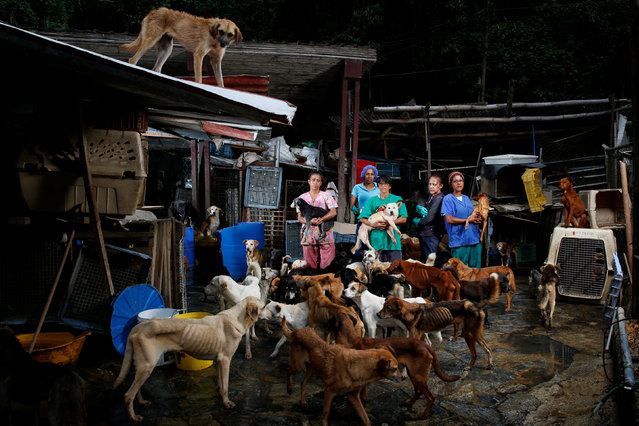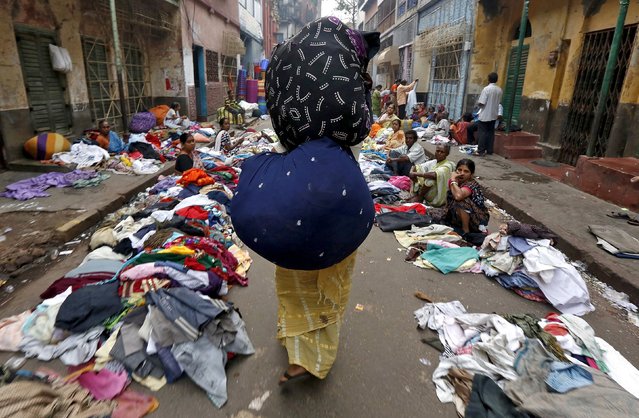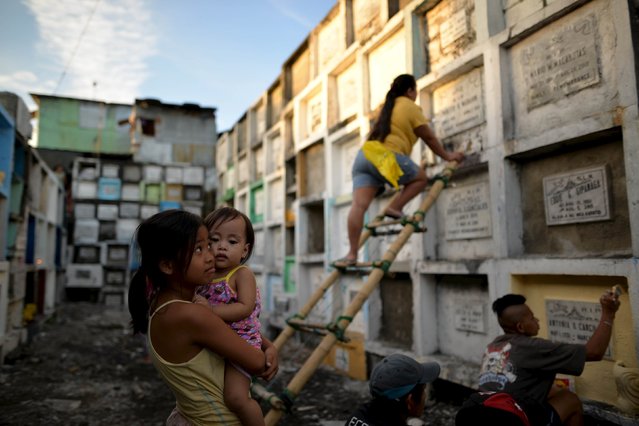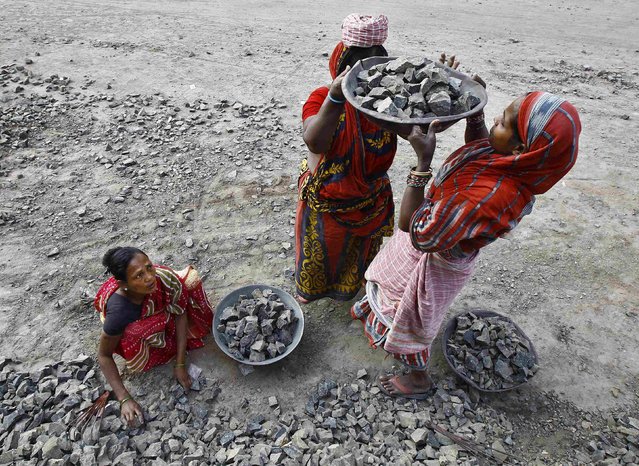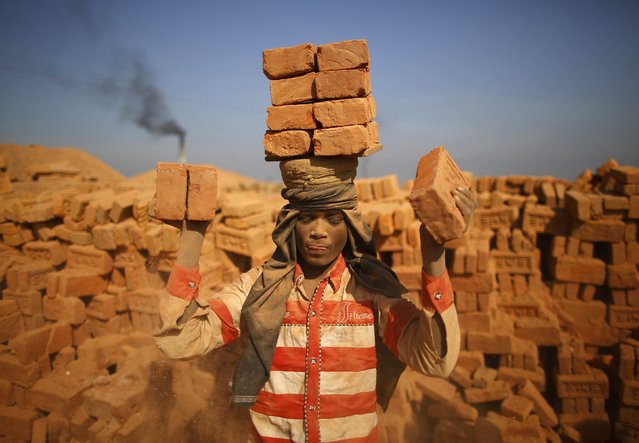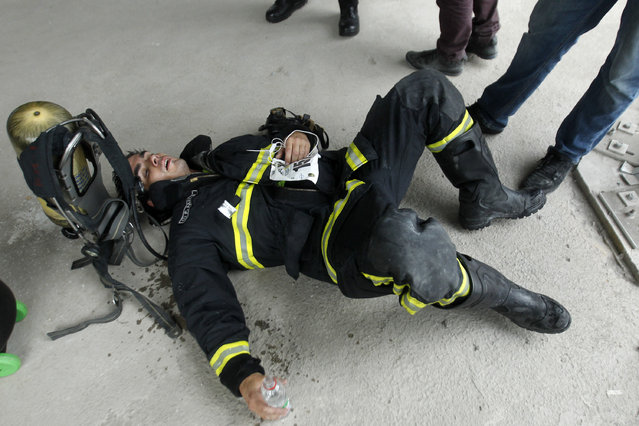
A firefighter recovers after climbing the 1800 steps of the Costanera Centre Tower as part of the “Race for Life” aimed at encouraging organ donation in Chile, in Santiago, on October 16, 2016. More than 500 volunteer firefighters are expected to climb the 1800 steps of the tallest building in South America to promote and encourage organ donation in the country. (Photo by Claudio Reyes/AFP Photo)
26 Oct 2016 10:46:00,post received
0 comments


